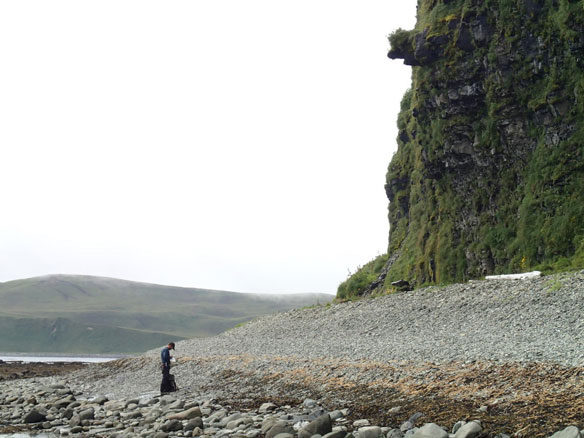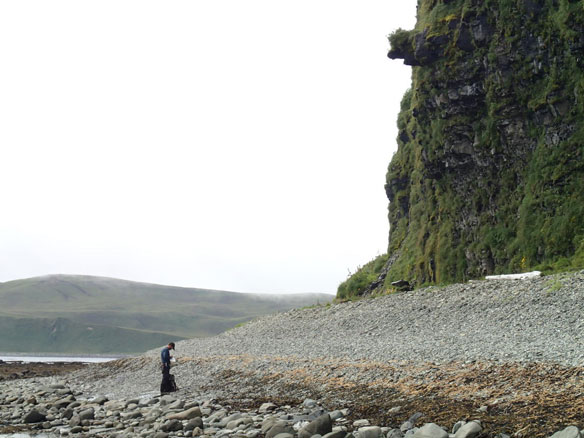
Geologist surveys the steep, coarse beach at the base of a 50 m high sea cliff along the northwest shore of Driftwood Bay, Umnak Island, Alaska. Credit: Simon Engelhart, University of Rhode Island. Courtesy: Simon Engelhart.
Excerpts;
Recent geological studies of a key section of the Aleutian Island chain of Alaska suggest Aleutian tsunamis may occur more frequently than previously understood.
The new findings indicate that the recurrence interval for large tsunamis generated in the eastern Aleutians ranges from 164 to 257 years, an important result that will inform updates to both the U.S. Geological Survey’s National Seismic Hazard Map and the tsunami source models of the NOAA-led National Tsunami Hazard Mitigation Program.
These hazard products promote community preparedness and resilience to earthquake and tsunami hazards in Alaska and in all coastal areas of the United States.
Comparing new research at Driftwood Bay, in the Fox Islands, with previous research at Stardust Bay near Dutch Harbor, some 200 kilometers (124 miles) to the east, scientists found long geologic records of earthquakes and tsunamis spanning more than a thousand years. In addition to increasing the accuracy of tsunami hazards assessments along the Alaska-Aleutian subduction zone, the findings highlight an important discovery: whether a subduction megathrust is locked or creeping today may not necessarily reflect its potential to generate large tsunamis.
These findings, published in the “Geological Society of America Bulletin” by a team of scientists led by USGS geologist Rob Witter, present strong evidence for the occurrence of eight tsunamis in the past 2,000 years at Driftwood Bay, which faces a locked section of the Aleutian subduction zone megathrust. A “locked” fault is one in which its two sides are stuck in their current position and are not moving in relationship to each other. In contrast, a “creeping” fault is one where the two sides of the fault are slowly and smoothly moving past each other, without creating earthquakes. When locked tectonic plates in a subduction zone break, the energy released can produce a giant earthquake and tsunami…









